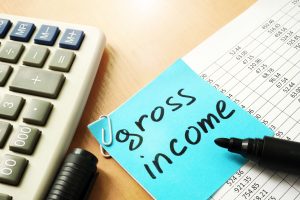
It is the opposite of the payout ratio, which measures the percentage of profit paid out to shareholders as dividends. So, the amount of income summary in the journal entry above is the net income or the net loss of the company for the period. Hence, the retained earnings account will increase (credit) or decrease (debit) by the amount of net income or net loss after the journal entry.

This ratio can provide insight into how effectively companies allocate their earnings to suitable investments that increase share value for growth companies. You’ll find retained earnings listed as a line item on a company’s balance sheet under the shareholders’ equity section. It’s sometimes called accumulated earnings, earnings surplus, or unappropriated profit. Your company’s retention rate is the percentage of profits reinvested into the business. Multiplying that number by your company’s net income will give you the retained earnings balance for the period.
Do you already work with a financial advisor?
Revenue, sometimes referred to as gross sales, affects retained earnings since any increases in revenue through sales and investments boost profits or net income. As a result of higher net income, more money is allocated to retained earnings after any money spent on debt reduction, business investment, or dividends. Cash dividends are a cash outflow from the company, reducing its cash balance. Usually, companies issue dividends at a specific rate on a fixed schedule.

Retained earnings are the portion of a company’s cumulative profit that is held or retained and saved for future use. Retained earnings could be used for funding an expansion or paying dividends to shareholders at a later date. Retained earnings are related to net (as opposed to gross) income because it’s the net income amount saved by a company over time. Traders who look for short-term gains may also prefer dividend payments that offer instant gains. Profits give a lot of room to the business owner(s) or the company management to use the surplus money earned. This profit is often paid out to shareholders, but it can also be reinvested back into the company for growth purposes.
What is the approximate value of your cash savings and other investments?
For investors and financial analysts, retained earnings are essential since they offer in-depth insights into a company’s long-term growth potential. A company with a high level of retained earnings indicates that it has been able to generate consistent profits, which can be used for reinvestment in the business or to fund future growth opportunities. Learn how to find and calculate retained earnings using a company’s financial statements. Any changes or movements with net income will directly impact the RE balance.
What Is Shareholder Equity (SE) and How Is It Calculated? – Investopedia
What Is Shareholder Equity (SE) and How Is It Calculated?.
Posted: Sun, 18 Jun 2023 07:00:00 GMT [source]
Because the company has not created any real value simply by announcing a stock dividend, the per-share market price is adjusted according to the proportion of the stock dividend. Cash payment of dividends leads to cash outflow and is recorded in the books and accounts as net reductions. As the company loses ownership of its liquid assets in the form of cash dividends, it reduces the company’s asset value on the balance sheet, thereby impacting RE.
Retained Earnings Guide: Formula & Examples
As you can see, the beginning retained earnings account is zero because Paul just started the company this year. Likewise, there were no prior period adjustments since the retained earnings example company is brand new. The beginning equity balance is always listed on its own line followed by any adjustments that are made to retained earnings for prior period errors.
